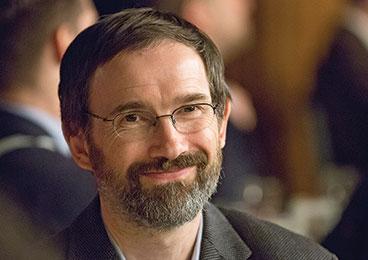
Rising sea levels, intensifying hurricanes, and persistent droughts: We are witnessing the effects of climate change in our own lifetimes. But if the world temperature continues on its trajectory to rise a predicted 2 to 3 degrees Celsius by the end of the century, the vast majority of the effects of climate change will be borne by future generations. One conundrum for policymakers has been deciding how to develop climate-change policies now for a population that the U.N. estimates could increase by 3.6 billion in the next 100 years.
A paper co-written by Woodrow Wilson School research scholar Noah Scovronick and Woodrow Wilson School economics and humanistic studies professor Marc Fleurbaey, among others, grapples with how policymakers should consider the well-being of future humans when determining climate-change policies.
“Climate-change mitigation incurs a cost in the near term but will primarily benefit people in the future, including an unknown number of those not yet born,” the paper states. “As a result, the number of future people is an important determinant of climate policy, depending on how society chooses to value the quantity and quality of people’s lives.”
Scovronick and Fleurbaey’s paper is part of a growing corpus of work seeking to determine the social costs of carbon, which, in monetary terms, is equivalent to the long-term damage, in dollars, done by a ton of carbon-dioxide emissions per year. Policymakers use that number to calculate carbon taxes and other policies to achieve the greatest benefit.

The paper explains that most climate-change models strive to maximize the total well-being of all people around the world — a factor in ethical terms known as total utilitarianism (TU). “If you have 100 people at a high level of well-being, and you add one more, then that’s a good thing,” Scovronick says. The authors posit an alternate model: Average utilitarianism (AU), which isn’t concerned with the absolute number of people in the world, but with their average level of well-being.
Under the TU view, future (i.e., larger) populations are weighted more highly. According to Scovronick, that means a degraded environment carries a higher social cost in the future, so we should be doing as much as possible to lessen climate change now. That might include imposing costs on those alive today, such as higher carbon taxes to drive down fossil-fuel emissions.
According to a TU approach, population growth would be positive, since it adds to the capacity for well-being in the world, even though, in practical terms, more people means more carbon emissions. An AU approach, however, would advise limiting increases in the world’s overall population, thereby driving down emissions and stress on the environment. That view would emphasize economic development as a means to improve the well-being of people around the world today and at the same time promote measures meant to slow the projected population increase. So while TU could lead to more aggressive targets for climate-change policy, it places less emphasis on the benefits of controlling population; the AU view, meanwhile, could encourage efforts to curb population growth, but might provide less incentive to enact forceful policies to control carbon emissions.
The choice between the TU and AU premises is important for helping climate-change policymakers set priorities, the paper says, but it is not widely discussed within the climate-change community, which defaults to a total-utilitarianism point of view in models.
According to Princeton professor and environmental ethicist Peter Singer, this paper highlights that overlooked aspect of the climate debate: “No one even mentioned ... whether having a larger population is in itself better than having a smaller population, assuming the average well-being remains the same,” he says. “The paper calls attention to a neglected issue in these debates.”
The AU model isn’t perfect, say the researchers: By emphasizing average well-being, such models could also inadvertently increase inequality by allowing for a scenario in which a small number of very well-off people counterbalance a large number of people who are poor and struggling. (TU similarly ignores the distribution of well-being, focusing on the total.) Fleurbaey and others have previously argued that factoring regional inequality into climate models necessitates a more aggressive approach to climate-change policy than one based on worldwide averages.
Scovronick and Fleurbaey stress that they hope to make economists aware of the assumptions they are making by defaulting to the TU model in policy considerations and are currently exploring other ways of valuing population that might present a middle ground. They are also examining ways in which inequality influences the climate debate: “[In] matters for the assessment of policy, it’s not just how many people are born,” says Fleurbaey, “but where and in what social conditions they are born.”
